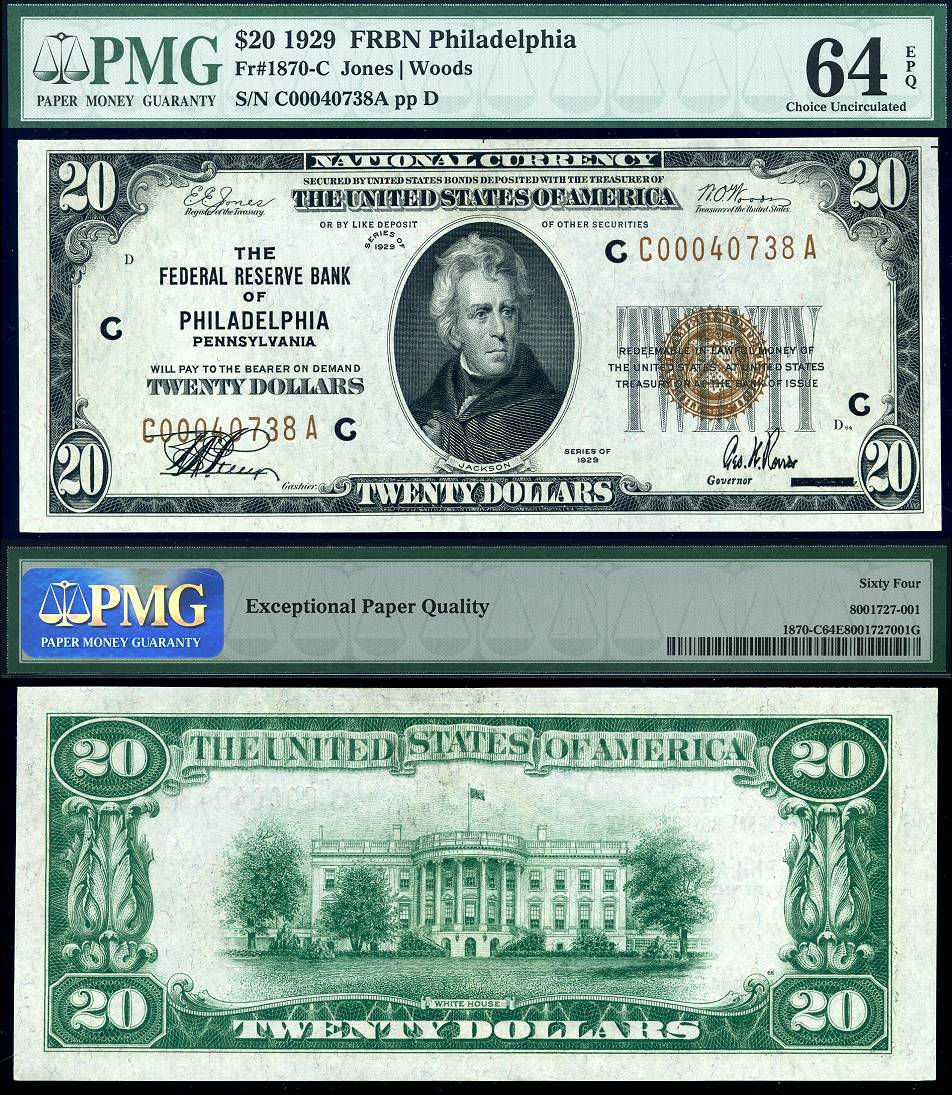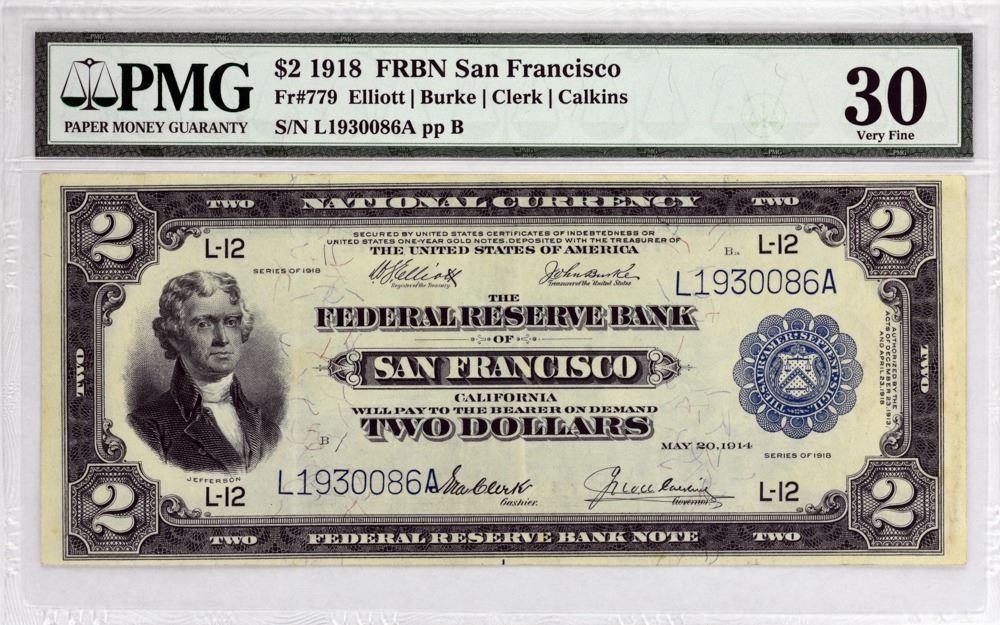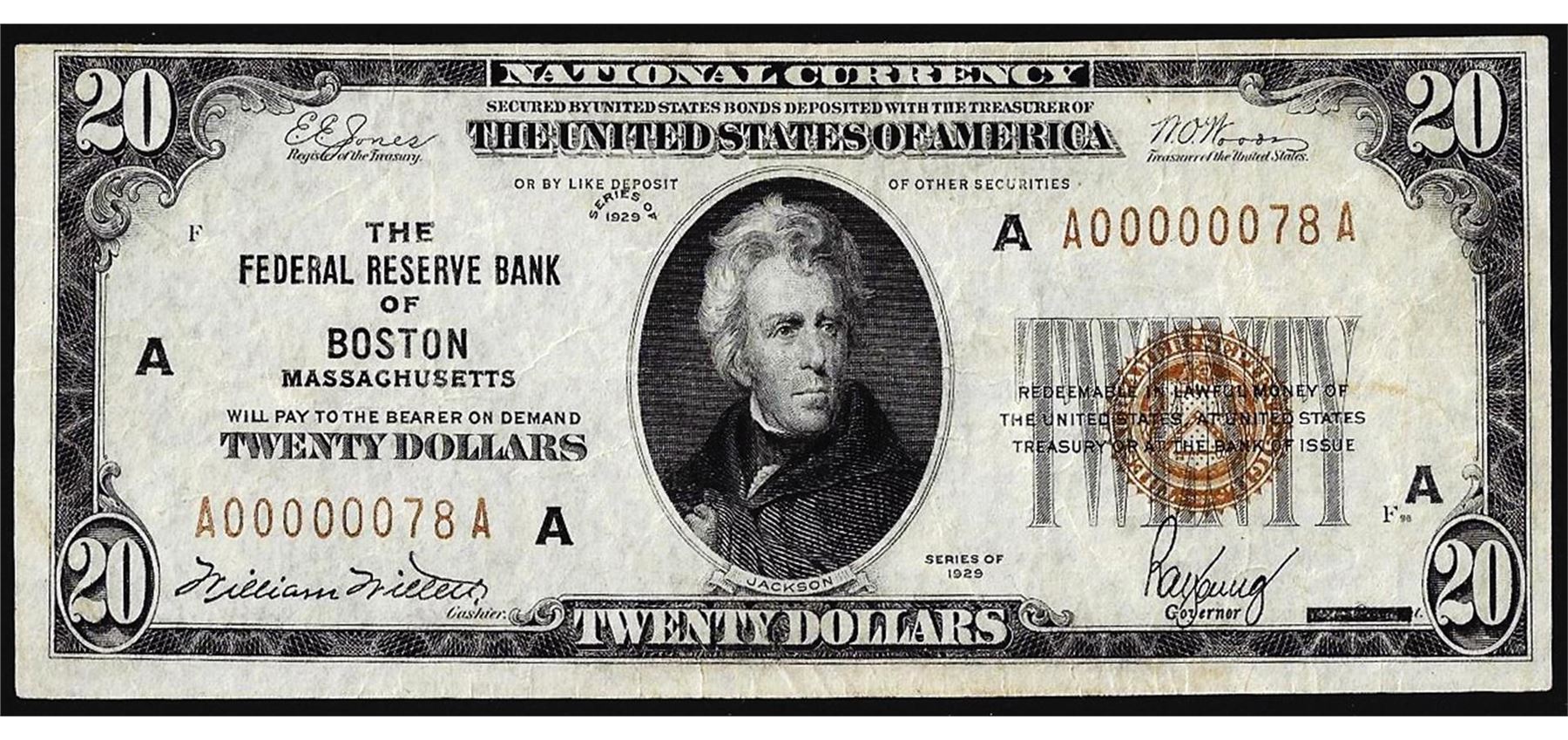

#Federal bank note series
The largest note was the $100,000 gold certificate, series 1934. What was the largest denomination ever issued? Who is pictured on it? “ In God We Trust” first appeared on the 1864 two-cent coin. When was the ‘In God We Trust’ motto adopted?Ĭongress passed an Act on April 22, 1864, changing the design of the one-cent coin to include the motto and authorized the creation of the two-cent coin. The bill also features the portraits of 42 of 56 signers and 5 other patriots. “The Signing of the Declaration of Independence” by John Turnbull features the drafters of the Declaration of Independence - John Adams, Roger Sherman, and Thomas Jefferson presenting the document, and Benjamin Franklin - standing before John Hancock, the president of the Continental Congress. Who is in the painting on the back of the $2 bill? The paper is 75 percent cotton and 25 percent linen. The Crane Company in Dalton, Massachusetts, created the paper for the Treasury in 1879 and still holds the patent. What materials are paper notes made of and who manufactures it? Visit Bureau of Engraving and Printing to learn more. Currency defacement is a violation of Title 18, Section 333 of the United States Code. Is it against the law to write on dollar bills? notes and Fed notes are part of our national currency and circulate as money in the same way.Ĭan I use older Federal Reserve notes when newly designed bills are in circulation? They are the first national currency authorized by the Legal Tender Act of 1862 and issued directly by the Treasury. notes? How do they differ from Federal Reserve notes? Code) states “United States coins and currency (including Fed notes and circulating notes of Reserve banks and national banks) are legal tender for all debts, public charges, taxes and dues.” But person and organizations do not have to accept these forms of payments. The "Legal Tender Statute" (section 5103 of title 31 of the U.S. They shred notes that are too worn for recirculation. Reserve Bank cash offices use processing and authentication machines to determine if currency is genuine and fit for recirculation.

currency destroyed when it’s removed from circulation? Visit the Federal Reserve’s estimated lifespans. paper money varies depending on the denomination. notes ($0.2 billion), currency no longer issued ($0.2 billion) and coins outstanding ($47.2 billion). This figure includes Federal Reserve notes ($1,655.2 billion), U.S. There was approximately $1.70 trillion in currency in circulation as of January 31, 2019. How much coin and currency is in circulation? How are coins and currency put into circulation?ĭepository institutions get coins and currency from their Reserve Banks. They store coin in their vaults and at coin terminals operated by armored carriers. Reserve Banks submit monthly coin orders and 12-month rolling coin-order forecast. The United States Mint makes coin at its production facilities in Philadelphia and Denver. There is more than $1 trillion worth of Fed notes in circulation. The Fed pays for the cost of printing new currency and moving it from the BEP facilities in Washington, D.C., and Fort Worth, Texas, to Reserve Bank cash offices. Each year, the Board of Governor’s submits a print order based on their assessment of the growth rates for payments of currency to and receipts of currency from circulation. Treasury’s Bureau of Engraving and Printing (BEP) prints currency. With 28 cash offices nationwide, the Fed services approximately 8,400 banks, savings and loans, and credit unions.

Reserve Banks distribute, receive and process Fed notes, and distribute and receive coin through depository institutions. Treasury’s Bureau of Engraving and Printing prints currency. Does the Fed print bank notes or mint coins?


 0 kommentar(er)
0 kommentar(er)
